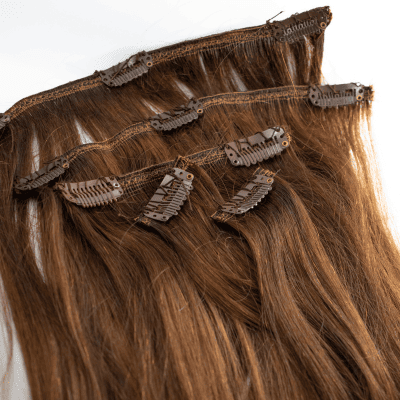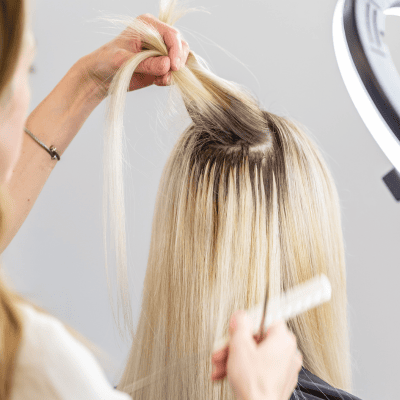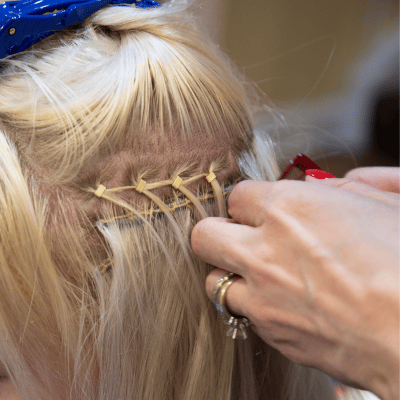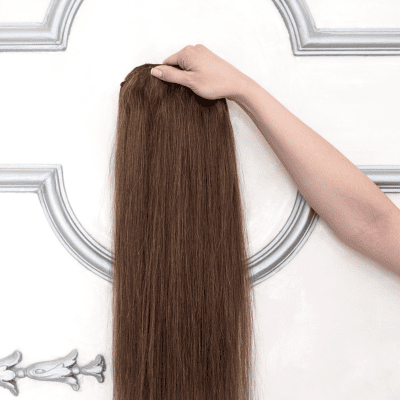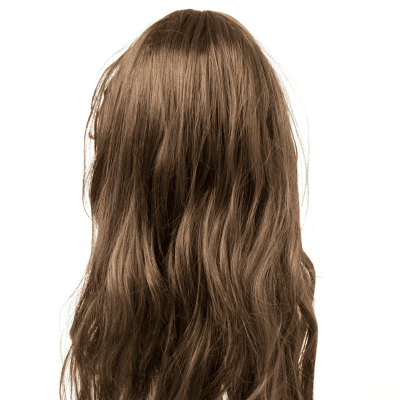
Welcome to the world of hair dreams – you know, where we all secretly want those stunning locks that make heads turn. Have you ever caught yourself daydreaming about effortlessly achieving that flawless hair game?
Well, meet your ultimate game-changer – hair extensions. They’re not just hair accessories; they’re your shortcut to instantly rocking thicker, fuller, and longer hair. But hold up – it’s not a one-style-fits-all situation.
Whether you’re vibing with synthetic or human hair, clip-ins, or tape-ins, there’s a whole world of choices out there. Feeling a bit overwhelmed? No stress – we got you. Hair extensions are a great way to change up your style.
In this guide, we’re spilling the beans on hair extensions, breaking down the types, and dishing out the deets on the absolute best. Get ready to dive into a world where your hair dreams become an everyday reality, and the key to unlocking that perfect mane is right at your fingertips.
The Thorough Hair Extensions Guide
In this section, we’ll dive into the methods of hair extensions, uncovering what they’re all about, where they come from, and how to wear hair extensions so they can work their magic to give you that natural, luscious look you’ve been dreaming of.
What Are Hair Extensions?
The three main reasons for using hair extensions are:
- To get longer hair
- To get thicker hair
- To add color
Hair extensions are strands of real or synthetic hair that can be clipped, glued, or sewn onto natural hair. You have semi-permanent hair extensions that need a pro to work their magic – those stay in for a few weeks to a few months, and you can’t remove them yourself.
There’s also the option to go for more of a temporary deal. You can slap those babies on at home in just a few minutes and use them whenever you want.
You’ve got human hair extensions, which come from real human hair, often sourced from places like India, China, Vietnam, and Malaysia, and look the most natural but are more expensive as well. You can use them like your own hair: heat styling, hair dye, or cutting it is no problem. You can even wash and dry them if you want.
Then, there are synthetic hair extensions made from specially crafted man-made fibers that mimic the look of natural hair – most of the time less expensive but may look less natural.
What Types Of Hair Extensions Are There?
You may think that there are one or two types of hair extensions, but nope – there are actually a lot of options to choose from! Let’s go over the options together quickly, as this will help later on to decide what fits you and your lifestyle the best.
How Do The Different Types Of Hair Extensions Work?
Clip-in Extensions
The ultimate hair extension convenience – clip-ins! Picture hair wefts with handy little clips that effortlessly snap into your natural hair. Clip-ins are all about versatility. They don’t come in just one size – there’s a whole range to choose from, giving you the power to create your own look like never before.
No need to wait for a salon appointment – you can change your look in just minutes, wherever and whenever you want. So here’s to the convenience revolution in the hair world – where clip-ins totally change the game, giving a modern, pro touch to every hair transformation.
- Snap them in for a night out.
- Pop them out before bedtime.
- No long-term commitment.
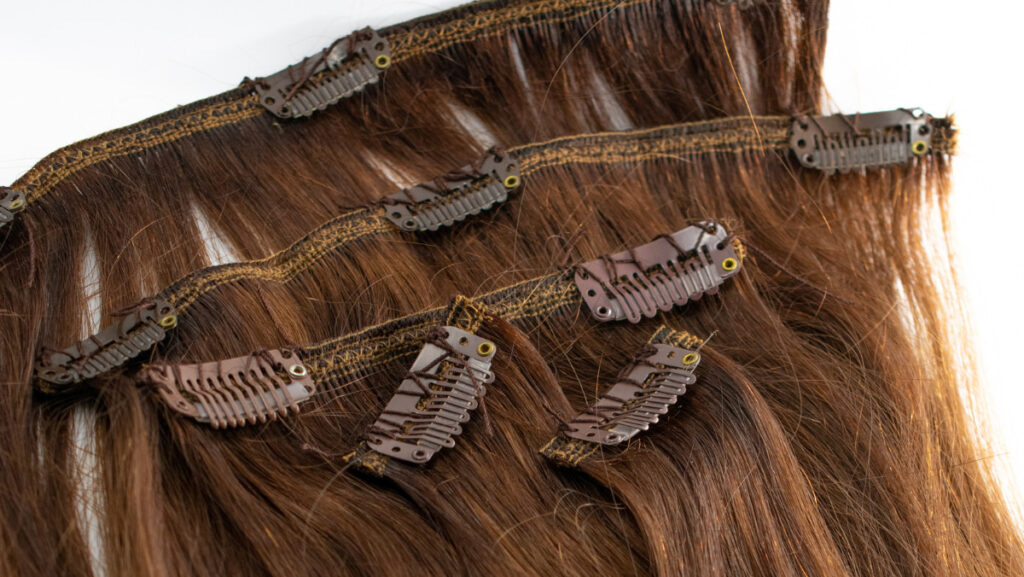
How To Apply Clip-In Hair Extensions?
You’ll begin by sectioning your hair horizontally and starting from the bottom. Snap open the clips, align the wefts to the parted line, and secure them in place by snapping the clips shut. Ensure they’re comfortably snug against your scalp.
Pros & Cons Of Clip-in Extensions
| Pros | Cons |
|---|---|
| Quick to apply | Can slip if not secured properly |
| Non-damaging as no heat or glue is used | It may need adjustment throughout the day |
| Versatile styling options |
Tape-in Extensions
Tape-in hair extensions are a total game-changer, especially for people with thin hair. They have super thin tapes, about 4cm wide, that blend perfectly with your natural hair to give you extra volume without anyone noticing. These thin tapes lie flat against your scalp, making them feel lightweight and comfy to wear all day long.
The best part? These tape-in extensions can last for weeks if you take good care of them. That means you can enjoy fuller, longer hair without committing to a more permanent change. With their easy application, natural look, and long-lasting hold, tape-in extensions are the go-to choice for getting that full, glamorous hair, especially if you have fine or thin hair.
- Virtually invisible: They lie flat, so they’re hidden under your hair.
- Lightweight: You’ll barely notice they’re there.
- Gentle on hair: No heavy beads or clips.

How To Apply Tape-in Hair Extensions?
When applying them, a small section of your natural hair gets sandwiched between two tape-in extensions, creating a strong bond that stays close to your head. This not only feels comfy but also lets you style your hair in lots of different ways, from sleek and straight to big, bouncy waves.
Pros & Cons Of Tape-in Hair Extensions
| Pros | Cons |
|---|---|
| Flat against the head, virtually undetectable | Requires professional installation |
| Suitable for fine hair | Maintenance appointments are necessary |
Weft or Sew-In Extensions
Sew-ins or weft hair extensions are for the ladies committed to their style. Your natural hair is braided into cornrows, and then, here’s the clincher: wefts of hair are sewn into the braid.
- Super secure: Ideal for coarse, curly, or thick hair types.
- Lasting wear: With proper care, they can last a while.
- No heat or glue is needed: Just needle and thread.
It’s a process but worth it for that bouncy, full-headed glory.

How to Apply Sew-In Hair Extensions?
A stylist will braid your natural hair into cornrows before sewing the extension wefts onto the braids with a special needle and thread.
Pros & Cons Of Sew-In Extensions
| Pros | Cons |
|---|---|
| Long-lasting and secure | It can be heavy and uncomfortable |
| No need for adhesives or solvents | Risk of traction alopecia with too tight braids |
Cold Fusion Hair Extensions
Cold fusion hair extensions use a keratin-based bonding system to attach the extensions to your natural hair. This technique treats your hair with care, offering easy removal and reapplication. Cold fusion hair extensions boast versatility in styling and are crafted to seamlessly mimic the look and feel of your natural hair.
- Uses a keratin-based polymer to attach extensions to roots.
- No heat: Hence, cold fusion.
- Long-lasting: They can stay in for months.
Ideal if you want to maintain your extensions for longer periods.

How to Apply Cold Fusion Hair Extensions?
Cold fusion uses ultrasound waves to bond keratin-tipped extensions to your natural hair without heat.
Pros & Cons Of Cold Fusion Hair Extensions
| Pros | Cons |
|---|---|
| Less damaging than hot fusion | Higher cost due to technology used |
| Strong, secure bond | Time-consuming application process |
Hot Fusion Hair Extensions
Hot bonded extensions use heat to fuse the extensions with your natural hair. This technique is favored for its creation of a durable bond capable of enduring daily wear. On top of that, hot-bonded extensions offer styling versatility and can be effortlessly removed using the appropriate tools.
- Durable: The bond means you’re set for 3-4 months.
- Blend seamlessly: As if they were growing right from your scalp.
- Application and removal: This should be done by pros to keep your natural hair safe and healthy.
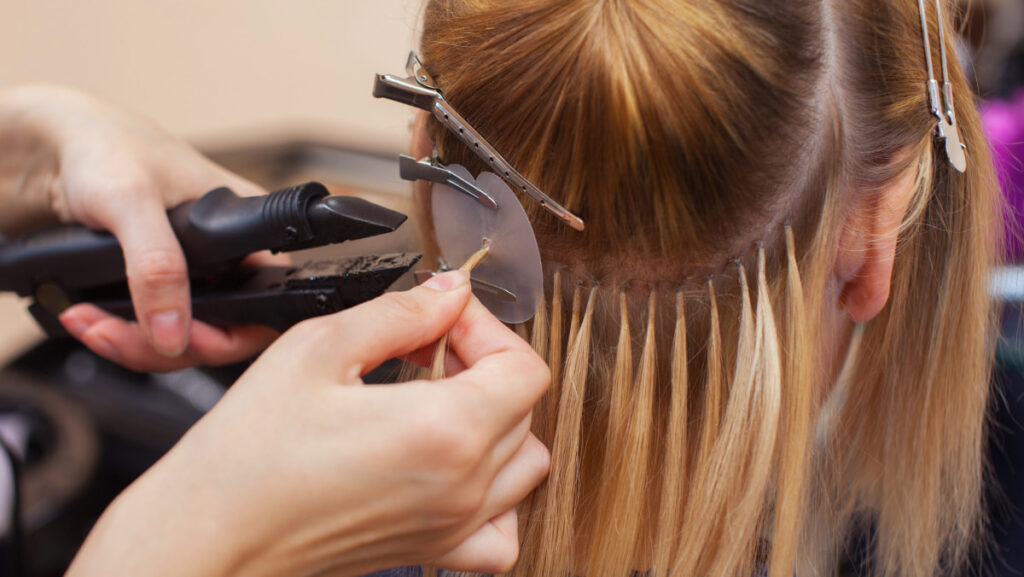
How To Apply Hot Fusion Hair Extensions?
A professional applies these by using heat to melt the keratin bond to a small section of your hair.
Pros & Cons Of Hot Fusion Hair Extensions
| Pros | Cons |
|---|---|
| Hair moves naturally | Heat application can be damaging |
| Long-lasting | Commitment to a long-term style |
Micro-Beaded Hair Extensions
Micro-beaded, also known as micro-ring, extensions are all about minimal hassle. No more dealing with heat, glue, or sewing; all you need are these tiny beads. Applying them is quite easy but still requires a visit to a hairstylist.
No need to worry about the discomfort of heat or the messiness of glue; micro-bead extensions give you the ultimate in ease and elegance.
- The bead clamps down to secure the extension in place.
- Adjustable: You can move them up as your hair grows.
- Re-usable: The hair can be taken out and put back in.
A more permanent solution that blends well if matched properly.
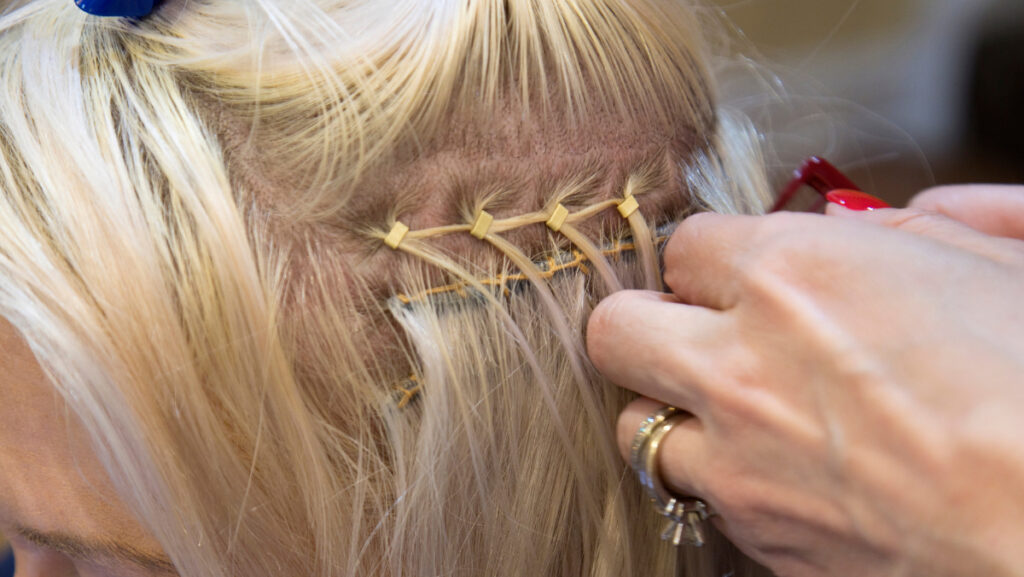
How To Apply Micro-Beaded Hair Extensions?
Small sections of your hair are threaded through a micro-bead and then clamped shut with the extension in place.
Pros & Cons Of Micro-Beaded Hair Extensions
| Pros | Cons |
|---|---|
| No glue or sewing required | Might slip if not secured tightly |
| Beads can be adjusted as your hair grows | It can be felt when lying down or wearing headphones |
Halo Extensions
Halo hair extensions are like a little angelic secret. They rest on your head with a nearly invisible wire. Here’s why you’ll love them:
- One-piece wonder: No multiple clips, no fuss.
- Zero damage: No clips, tapes, or tight sew-ins involved.
- Instant volume: Just slip them on, style, and you’re golden!
Perfect for special events or daily wear if you’re gentle on your hair.

How To Apply Halo Extensions?
Simply place the halo wire around your head and gently pull your own hair over the top with a tail comb to conceal the wire.
Pros & Cons Of Halo Extensions
| Pros | Cons |
|---|---|
| Extremely easy to apply and remove | May shift if not properly fitted |
| No damage to natural hair | Limited styling options compared to more permanent extensions |
Wigs
A wig is a head covering and is designed to copy natural hair and is worn on the head for various reasons, such as fashion, cultural or religious observance, performances, or as a solution for people experiencing thinning hair or hair loss.
- A lot of variety: Wigs come in various styles, lengths, and colors, allowing people to change their hairstyle or enhance their natural appearance without altering their own hair.
- Easy to apply: They are typically secured to the head using clips, combs, or other fastening methods.
- One-piece wonder: You don’t have to struggle with strands of hair; it’s a one-piece that you quickly put on.
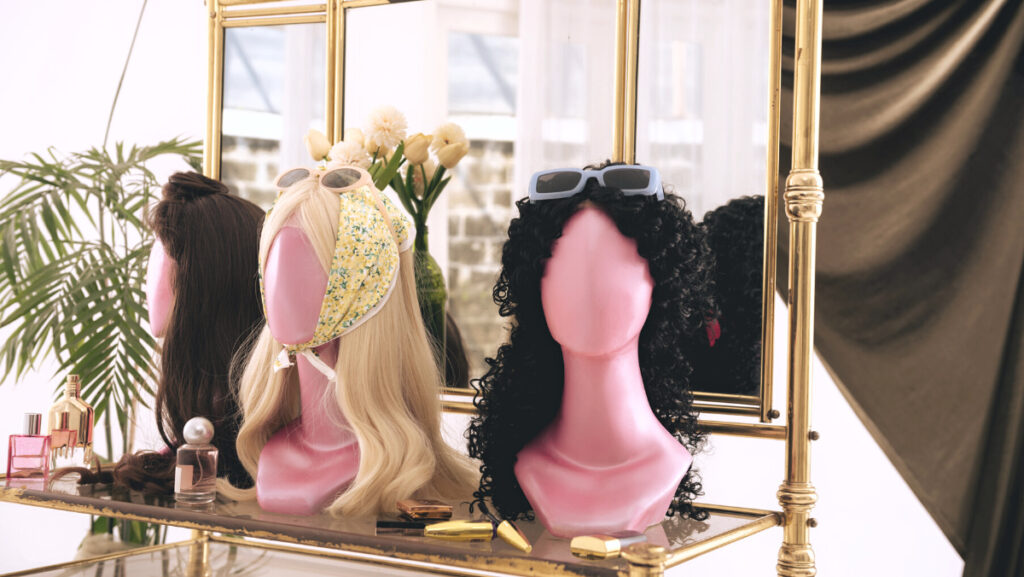
How To Apply A Wig?
Secure your natural hair flat against your head, apply a wig cap, and then place the wig on top. Adjust for a snug fit.
Pros & Cons Of Wigs
| Pros | Cons |
|---|---|
| Full head coverage | It can be hot and uncomfortable |
| Instant transformation | It might require custom styling or fitting |
How Long Do Hair Extensions Last?
The lifespan of your hair extensions is all about the method you go for and the love they get. Here’s the scoop: Temporary glam-like clip-ins tend to hang around longer since they’re not an everyday thing. Meanwhile, those semi-permanent extensions are in it for the long haul, 24/7. It’s all about the vibes and the care, people!
- Clip-Ins: 6-12 months
- Tape-Ins: 4-8 weeks
- Sewn-Ins: 6-8 weeks
- Cold Fusion: 4-6 months
- Hot Fusion: 4-6 months
- Micro links: 3-4 months
- Halo: 12-14+ months
- Wigs: 10-12 months
How Much Do Hair Extensions Cost?
Wondering about the price tag for hair extensions? It depends on a few key factors. Let’s break it down and give you the deets!
Depends On The Type of Hair Extension
Synthetic hair extensions are easier to find and easier to make. On the other hand, real human hair extensions are a bit pricier, but they’ll stay on your head for way longer. You’re looking at anywhere from $20 to $80+ for synthetic extensions and $100 to $500+ for real human hair[1].
Length and Weight of Hair
In the world of hair, size matters. Longer or heavier locks mean more material, and that means a bit more cash. A 16” 140g Clip-In sets are generally priced between $100 and $200[1]. But if you’re aiming for the full-length, full-volume Hollywood look with 24” 240g Clip-In sets, be ready to splash between $300 and $500. It obviously depends on the brand, too; some brands are pricier than others.
Application Method
Semi-permanent extensions come with a higher price tag – you’re not just paying for the hair but also for the skilled hair stylist applying it. Plus, there’s the maintenance – frequent salon visits to keep those extensions slaying. Temporary extensions? They’re the cost-friendly option, and you’re the boss. Wear them once or a gazillion times; it’s up to you.

